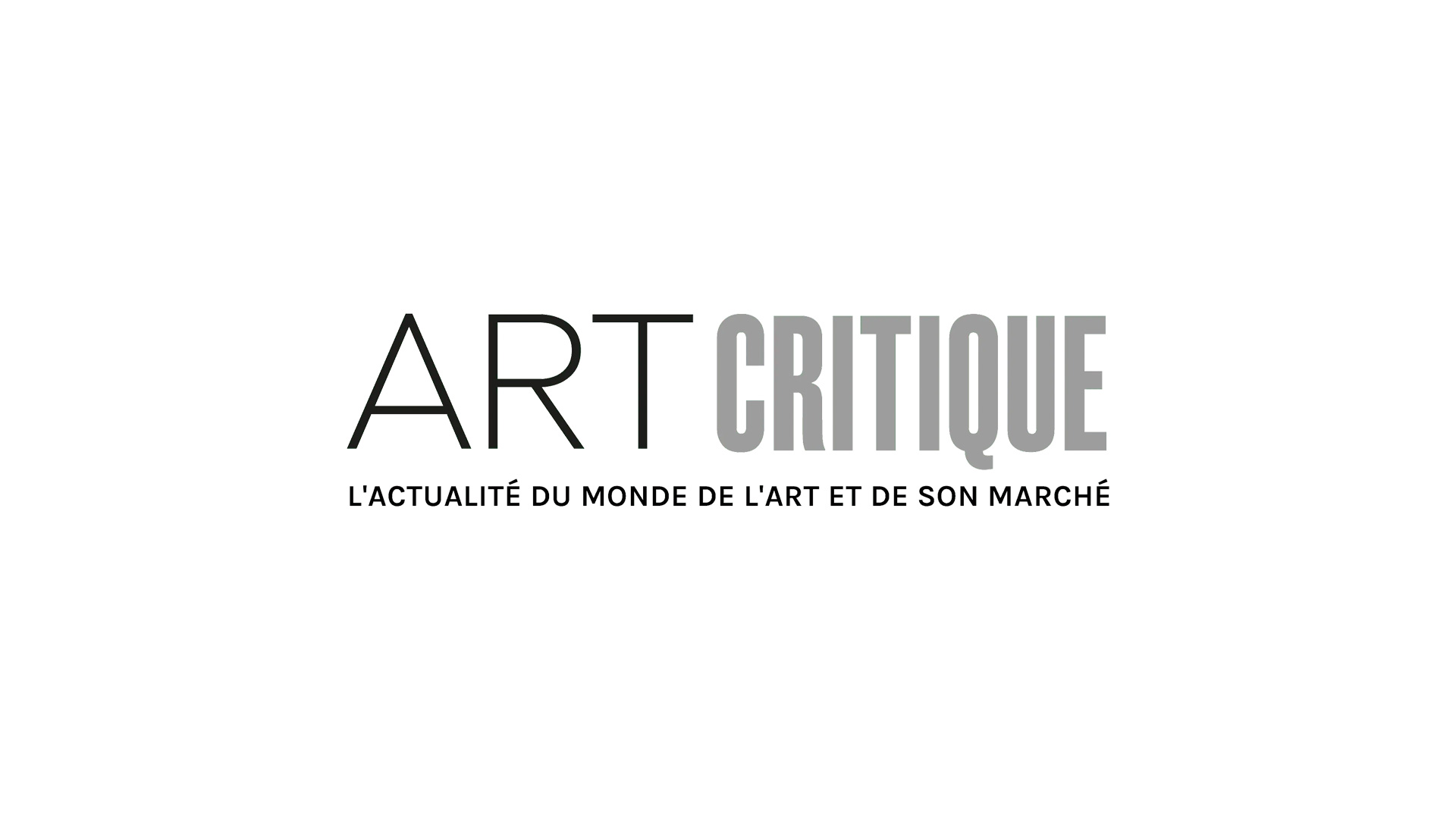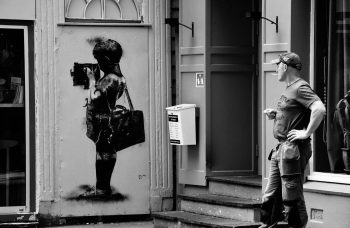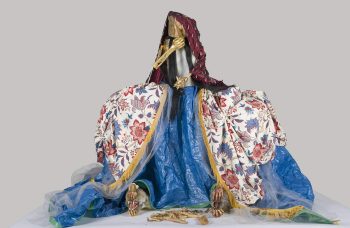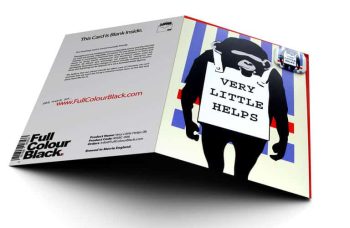Let’s face it… the art market of 2009 probably didn’t quite anticipate the years that were to come. The last decade has been an intense time with artworks selling for incredible amounts, even nearly half of a billion dollars. After covering 2019’s major events at the auction block, Art Critique takes a look at the biggest sale that each year of the 2010s had to offer.
2010: Nude, Green Leaves and Bust (1932) by Pablo PIcasso, $106.5 million
Just months after a sculpture by Alberto Giacometti became the most expensive artwork ever sold, Picasso overtook Giacometti by just $1.7 million. Featuring Marie-Thérèse Walter, Picasso’s mistress, the artwork sparked a steady eight minutes of bidding at Christie’s with the final bid coming over the phone. The work was sold from the estate of Frances Lasker Brody, a Los Angeles philanthropist. Considered to be a seminal work by Picasso, before it sold in 2010, the artwork hadn’t sold since 1951 when it brought in $19,800. With its chart-topping sale, the artwork shattered it’s $80 million pre-sale estimate.

2011: The Card Players (1890-1892) by Paul Cézanne, $250 million
When Qatar bought this painting, they single-handedly landed in first as having paid the most for an artwork. This purchase more than doubled the previous record set by Picasso’s Nude, Green Leaves and Bust. The work was created after Cézanne meticulously studied each portion of the painting figuring out each aspect. Somewhat unremarkable in subject-matter, the significance of the painting is that the vignette belongs to a series of five similar works of men playing cards. Although a quarter of a billion dollars may seem excessive for the work, it put Qatar in line with the Metropolitan Museum of Art, the Musée d’Orsay, the Barnes Foundation, and the Courtauld, which own other works from the series. The series is also of importance as critics have often viewed it as a major point in Cézanne’s career, just before he created some of his best-known works.

2012: Wasserschlangen II (Water Serpents II) (1904-1906/07) by Gustav Klimt, $183.8 million
Purchased by Russian billionaire Dmitry Rybolovlev from Yves Bouvier, the artwork already had a complicated history. The painting once belonged to Jenny Steiner, an art collector who owned a silk factory in Vienna, but it was taken by Nazis in 1938. The painting eventually fell into the hands of Gustav Ucicky, an Austrian film director and the purported illegitimate child of Klimt. Before it could be sold, a restitution settlement had to be reached with Steiner’s heirs, which saw the profits split between the seller and the Steiner heirs. The painting’s existence has become more intricate as it is caught up in the now famous Bouvier Affair in which Rybolovlev claims 38 artworks were oversold to him by Bouvier. The lawsuit has also ensnared Sotheby’s and Leonardo da Vinci’s Salvator Mundi (which would soon have its heyday in 2017).

2013: Le Rêve (1932) by Pablo Picasso, $155 million
For the second time in the 2010s, a work by Picasso finds itself at the top of the charts. Painted in the same year as Nude, Green Leaves and Bust, Le Rêve or The Dream is quintessentially Picasso. Both paintings also portray Picasso’s mistress, Marie-Thérèse Walter, but Le Rêve includes a number of erotic components. In 2018, The Guardian referred to the work as ‘erotic and primal,’ explaining that a portion of the figure’s face resembles a penis and her hands form a vagina. Before its 2013 sale, the painting was set to be sold in 2006 after an agreement was reached between then-owner Steve Wynn and collector Steve Cohen. Having agreed on a $139 million price tag, the sale was foiled when Wynn accidentally put his elbow through the painting creating a small hole. Thankfully for Wynn, the restoration to repair the work obviously paid for itself in the long run.

2014: Nafea Faa Ipoipo (When Will You Marry Me?) (1892) by Paul Gauguin, $210 million
Gauguin’s painting shows two Tahitian women, which he created during one of two trips to the island. During his trips, he romanticized and eroticized his depictions of Tahiti and life there in the hopes of creating popularity for himself. Unfortunately, that was a failed venture for the artist and his works were not recognized until after his death. Nafea Faa Ipoipo was sold by Rudolf Staechelin, a former Sotheby’s executive whose collection was largely amassed by his grandfather, to a Qatari buyer. It was originally marketed as the most expensive painting ever to be sold at the time, with a number of news outlets stating it was sold for nearly $300 million, but the actual figure was $90 million less than that.

2015: Interchange (1955) by Willem de Kooning, $300 million
When Interchange topped The Card Players, it wasn’t the first time the painting had seen an impressive return on investment. In the same year that de Kooning painted the work, Edgar J. Kauffman Jr., an architect and heir to the Philadelphia Kauffman Department Store fortune, for $4,000. The painting remained with Kauffman until after his death in 1989. When it was sold after his death it went for a staggering $20.68 million. But Interchange isn’t just well-known for its prowess at a sale, it was created at a time when de Kooning was working closely with Franz Kline and the two influenced each other at times. The painting was also the first work in more than a decade of abstracted landscape paintings that de Kooning made after moving to his East Hampton farmhouse.

2016: Adele Bloch-Bauer II (1912) by Gustav Klimt, $150 million
When the gavel fell on Adele Bloch-Bauer in 2006, it was scooped up for $87.9 million, setting an artist record. It was sold by Bloch-Bauer’s heirs, who had won an extensive legal battle for its possession against an Austrian museum after proving the work, along with four others, were stolen by Nazis from Bloch-Bauer’s husband. That story served as the inspiration for the 2015 movie Woman in Gold and when it sold ten years later, it maintained the artist’s record price. The 2016 sale also shed light on the provenance of the painting, showing that Oprah Winfrey was the person who’d won the bidding battle ten years prior. While it belonged to Winfrey, it was loaned out for shows Museum of Modern Art and its value increased by more than 70%. According to Bloomberg, Larry Gagosian approached David Geffen, a friend of Winfrey’s and an entertainment mogul, and Winfrey ultimately chose to part with the painting, though the buyer has remained anonymous.

2017: Salvator Mundi, attributed to Leonardo da Vinci, $450.3 million
Needless to say, when Christie’s sold Salvator Mundi, everyone’s jaws hit the floor. Much in part due to the hype of the painting being coined ‘The Last da Vinci,’ nearly 30,000 came to see the painting as it traveled to Christie’s Hong Kong, London, San Francisco, and New York and thousands of people around the world tuned in to watch the auction. Bought by an anonymous bidder, the painting steeped in controversy even two years after the sale. At one point, it was a highly anticipated inclusion to the Louvre’s blockbuster exhibition in celebration of the 500th anniversary of da Vinci’s death but, that hasn’t panned out. The painting was also meant to go on display at the Louvre Abu Dhabi in 2018, but the painting’s debut was delayed indefinitely. Its authenticity as a work by da Vinci is major sticking point as it can really never be completely authenticated as the artist’s own. Thus, the painting shocked and awed and it continues to baffle both critics and supporters as it maintains its mystery.

2018: Nu couché (sur le côté gauche) (1917) by Amedeo Modigliani, $157.2 million
When Modigliani painted Nu couché, it and its counterparts in a series of nude paintings he did between 1916 and 1919 were a complete scandal when they first showed in Paris. 100 years later, that tune has changed. At the time of the sale, co-head worldwide of Sotheby’s Impressionist and modern art department, Simon Shaw, said ‘there is the nude before Modigliani, and there is the nude after Modigliani.’ The auction of Nu couché, though $157.2 million (with buyer’s premium) is no small feat, was somewhat lackluster. With the premium, the painting just surpassed the $150 million pre-sale low estimate and some surely anticipated Nu couché to replace the artist’s record set in 2015 by his 1917-1918 version of Nu couché.

2019: Meules (1890) by Claude Monet, $110.7 million
After eight minutes of excited bidding, Meules more than doubled its pre-sale estimates at Sotheby’s New York and set a new auction record for Impressionist works. The painting is part of Monet’s iconic haystacks (or meules) series that includes 25 paintings of large haystacks at different times of the day. The study allowed Monet to work with how the light played on the setting and made for stunning representations of an otherwise mundane farm scene. The 1890 Meules was particularly special as it showed a different orientation of the haystacks and, it hadn’t been shown publicly for more than 30 years. More than half of the haystacks paintings belong to large collections, including the Metropolitan Museum of Art and the Musée d’Orsay, and the others, that are part of private collections, rarely come up to auction.

1890. Courtesy Wikimedia Commons.





